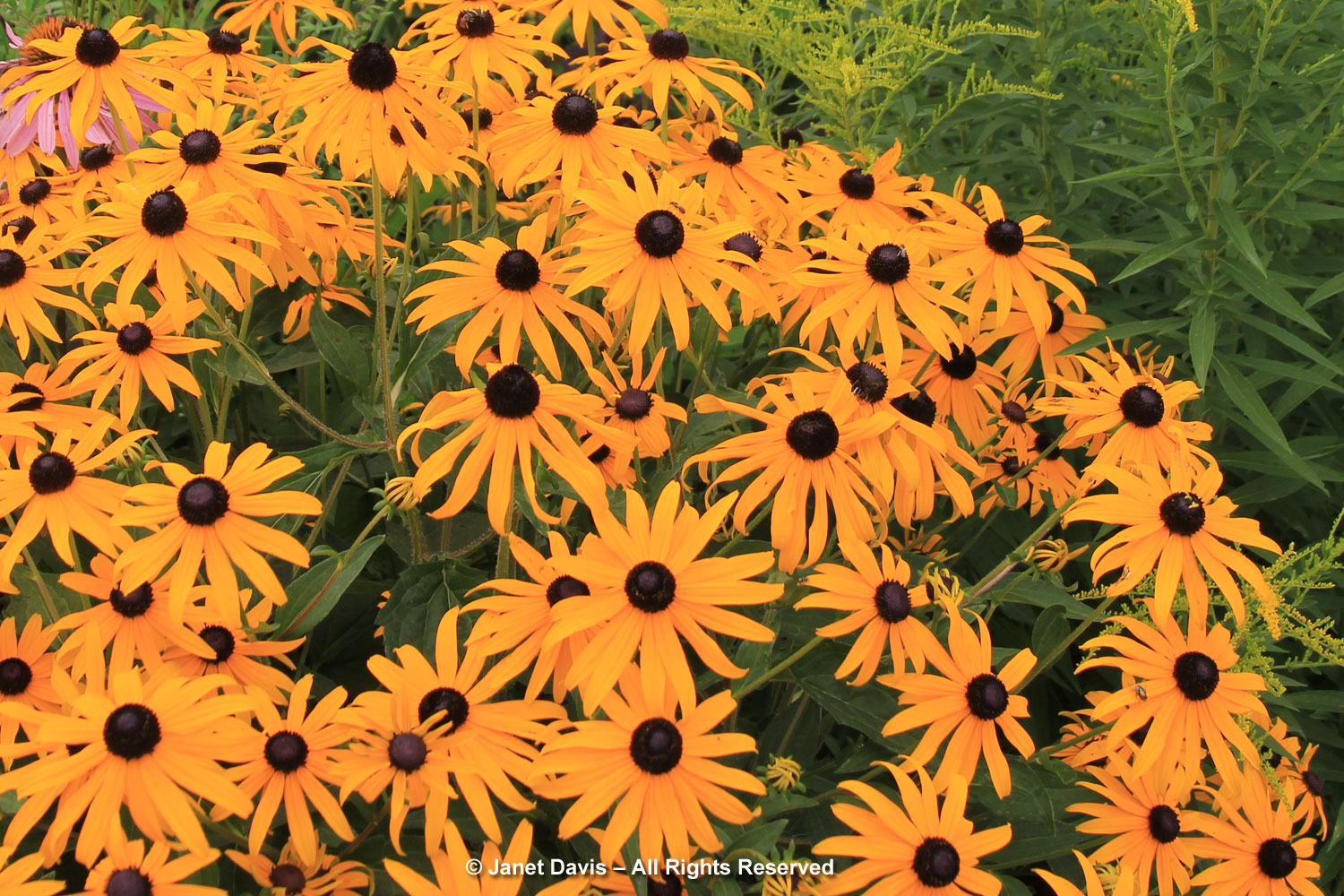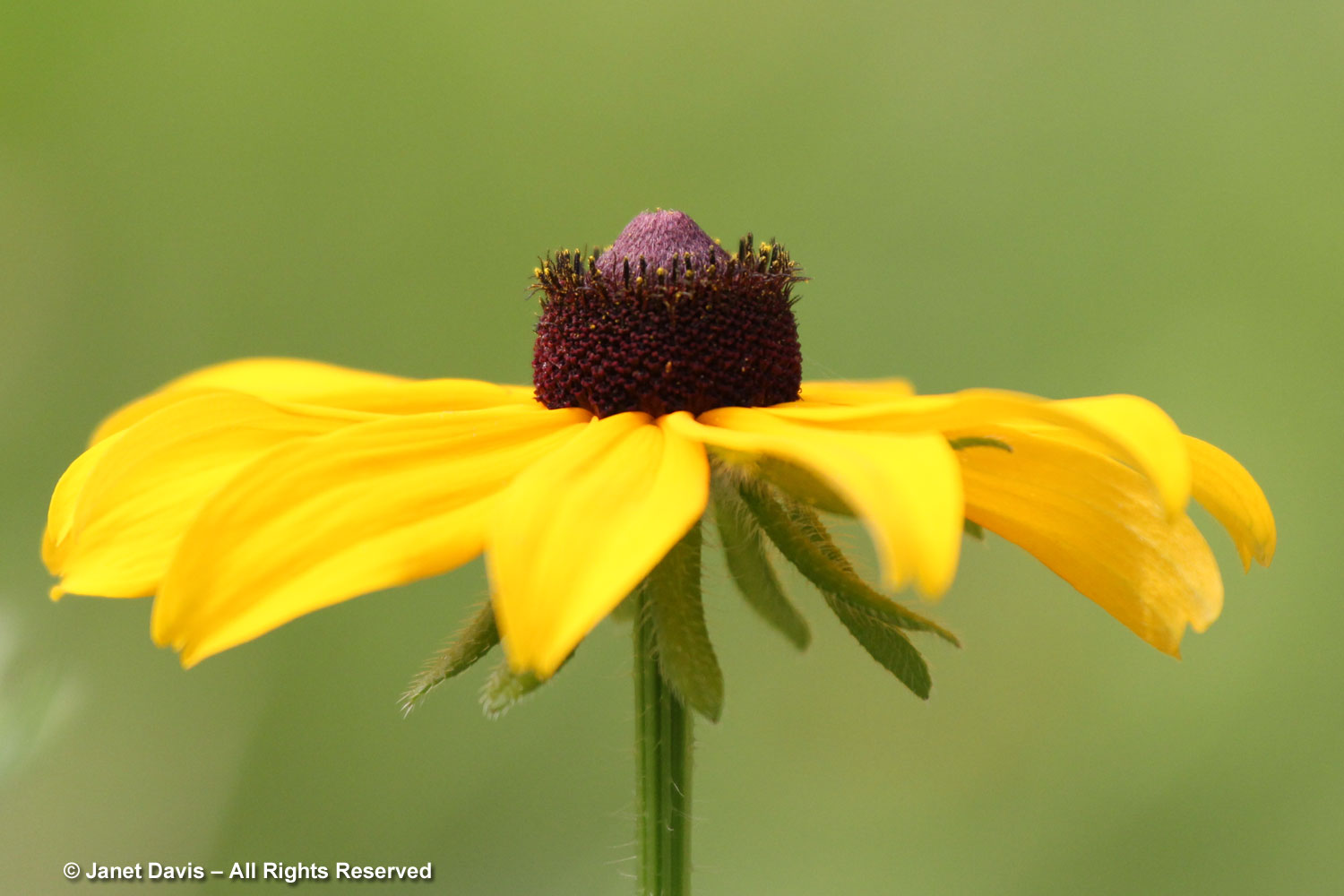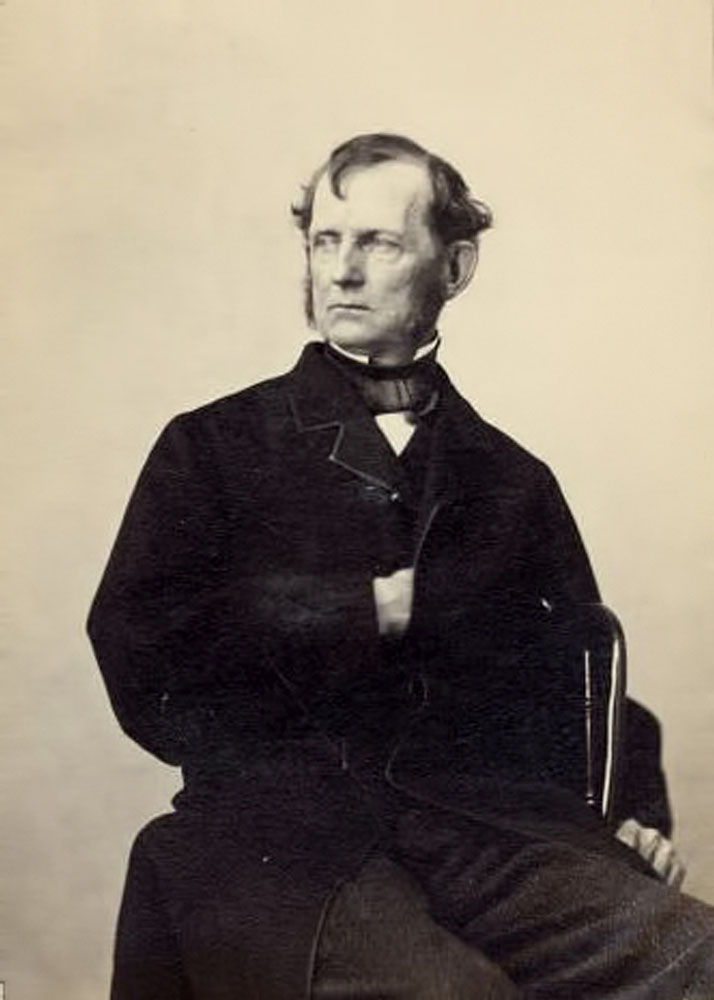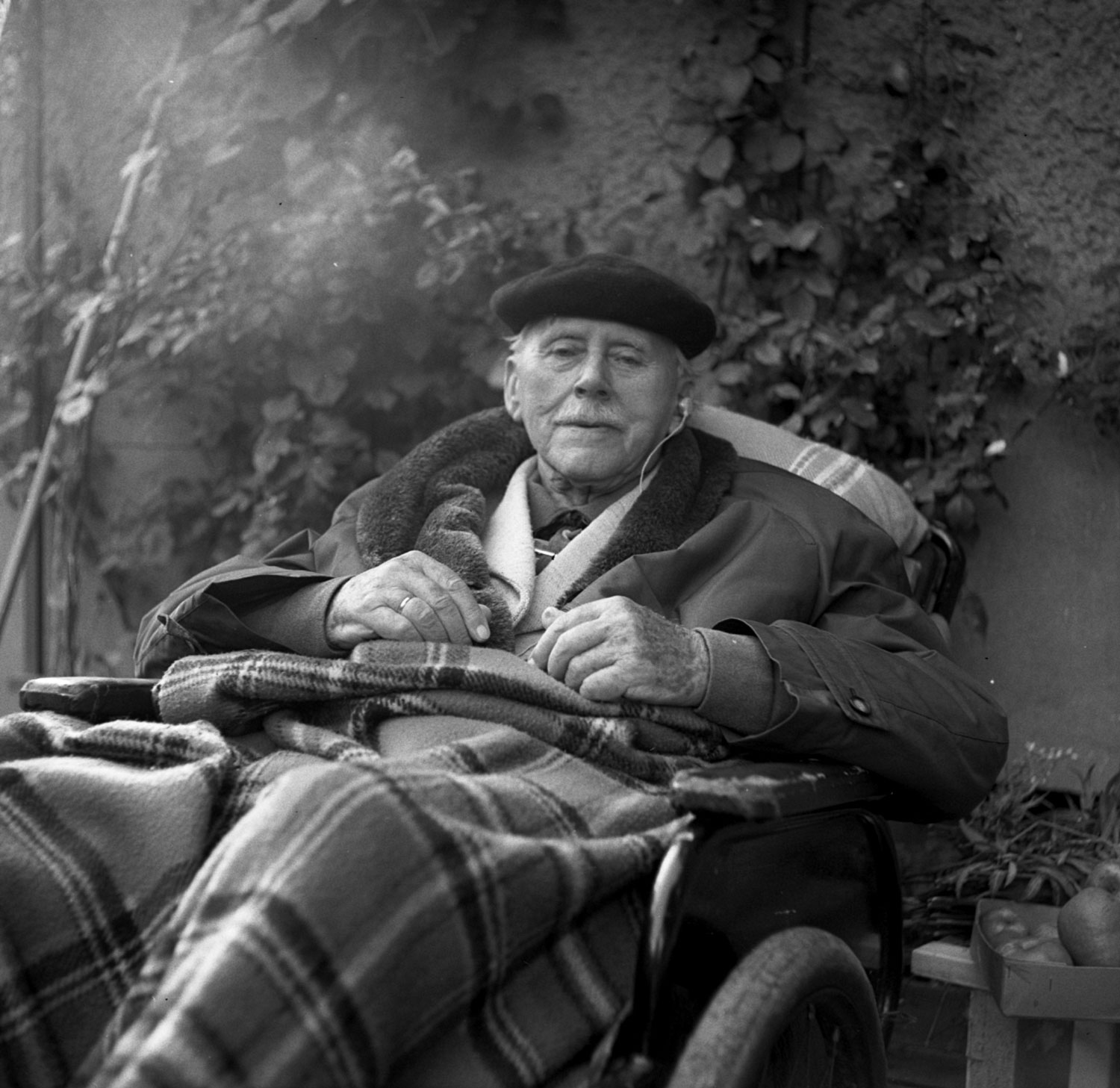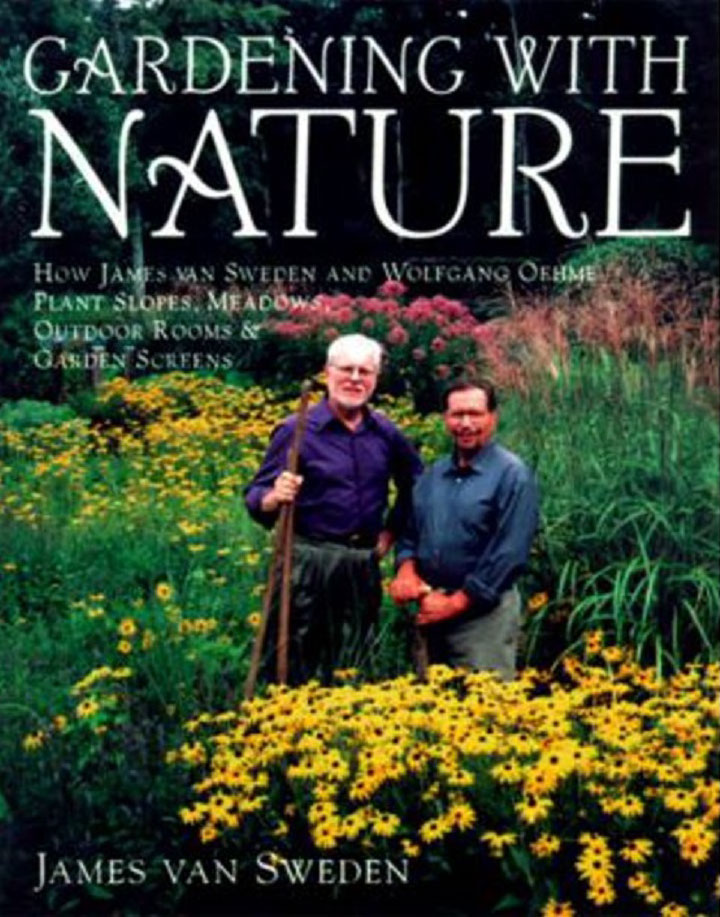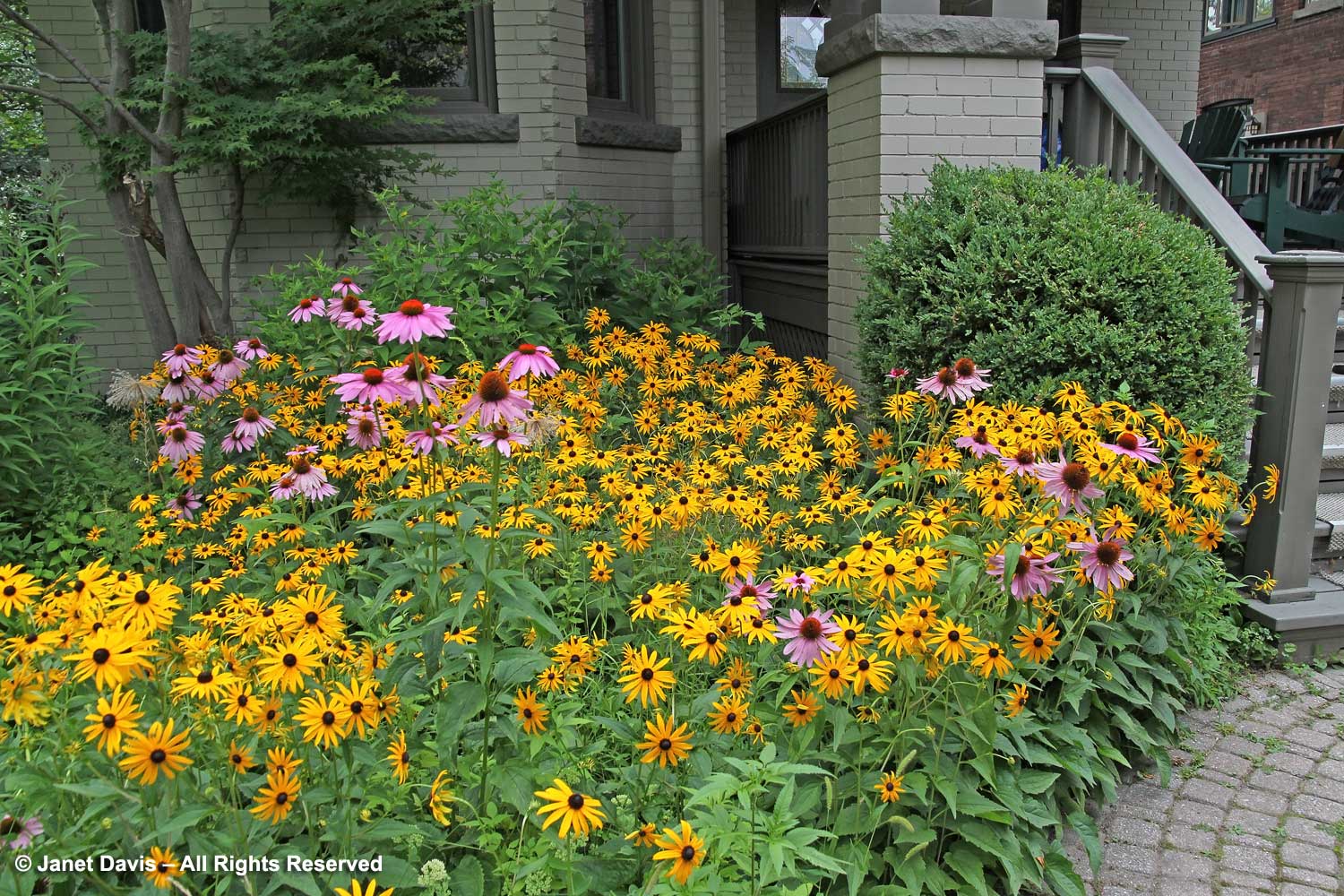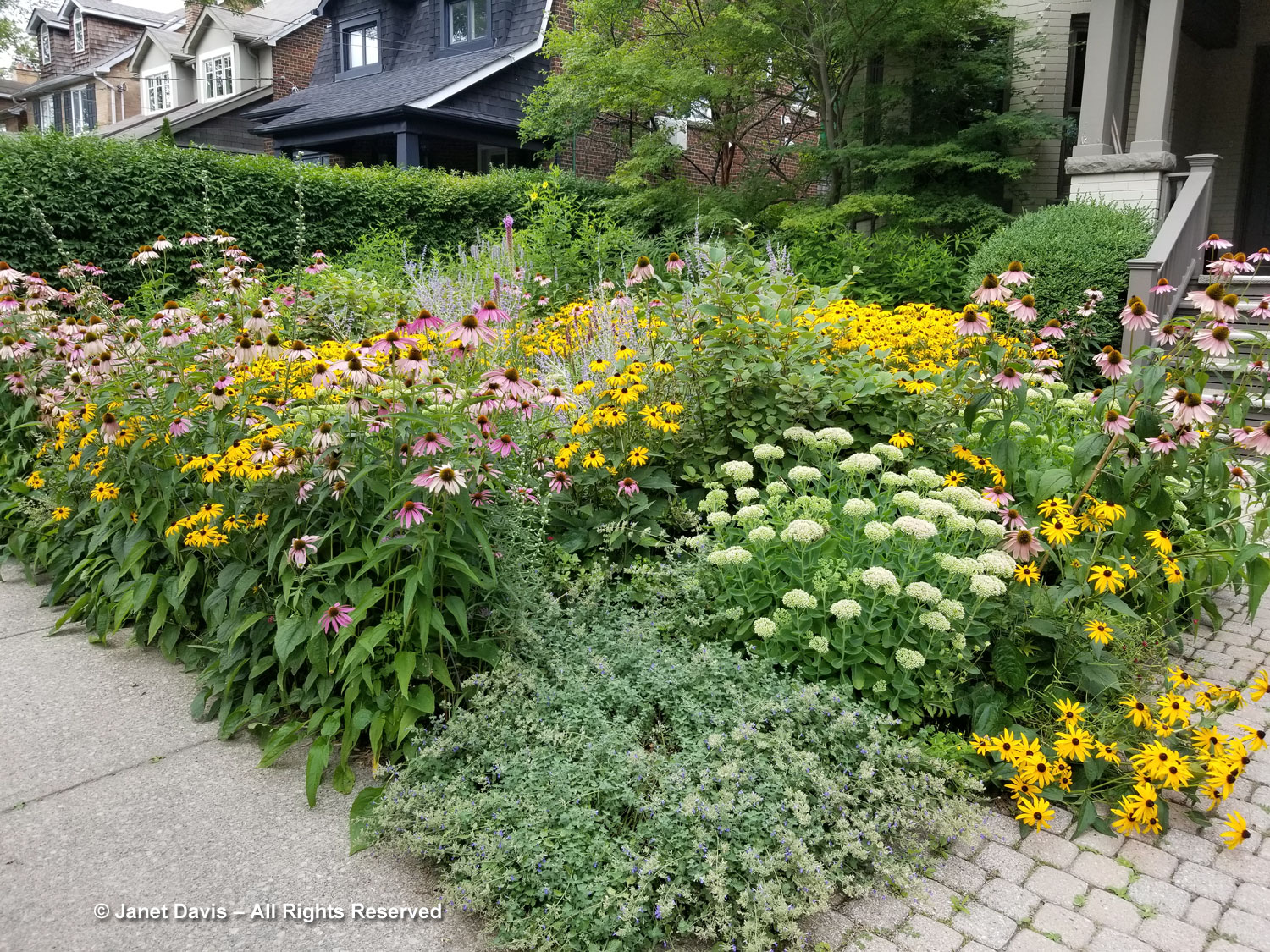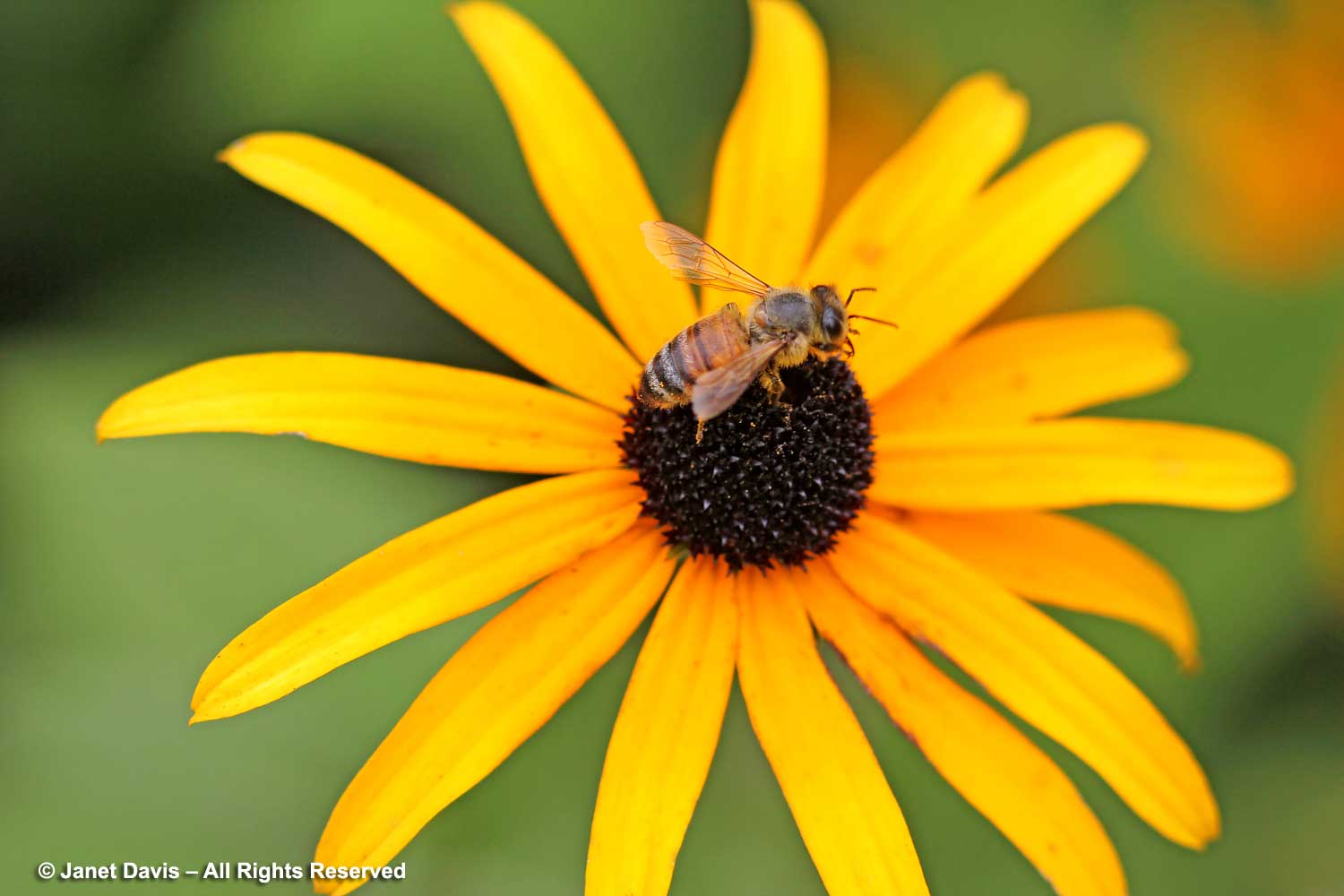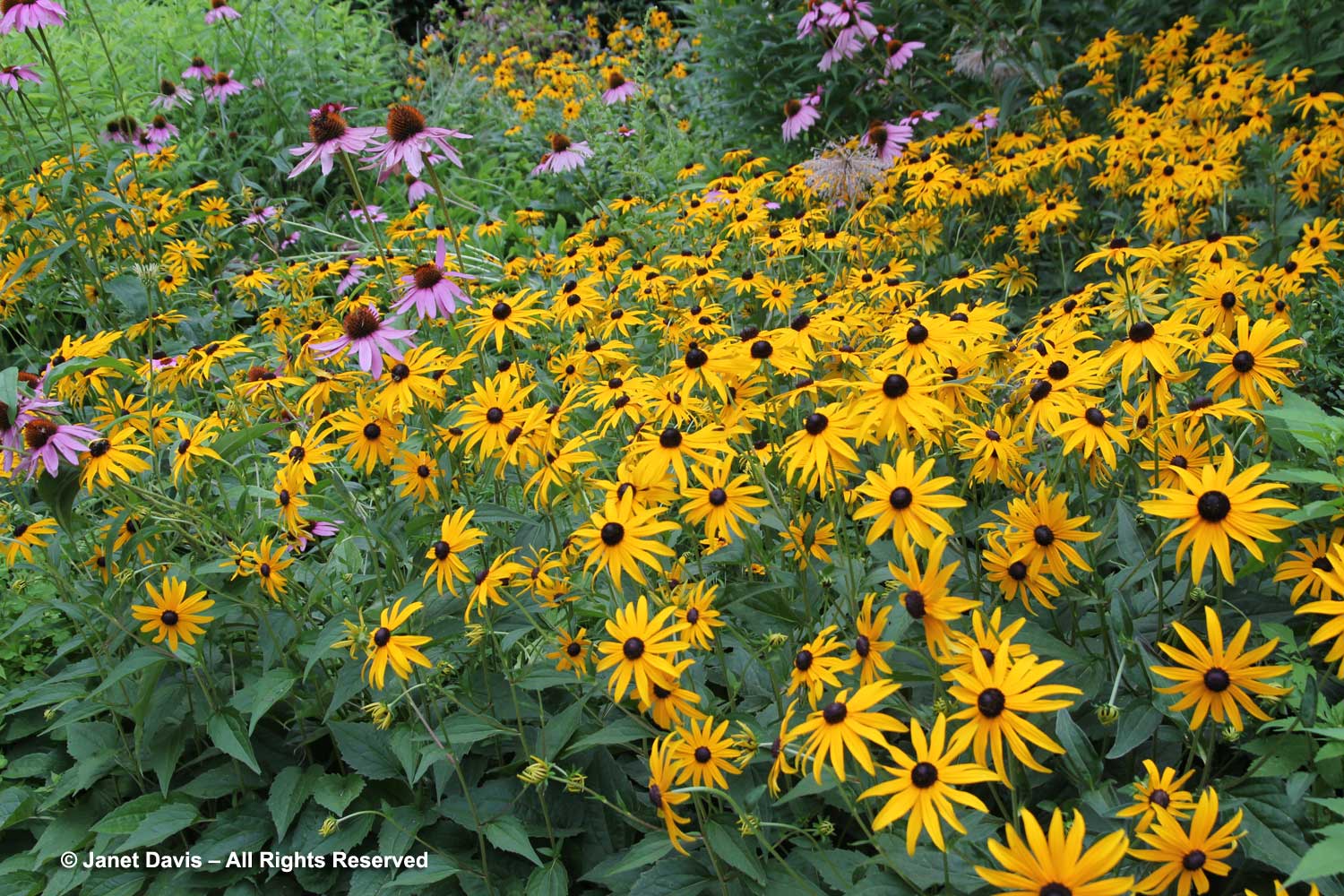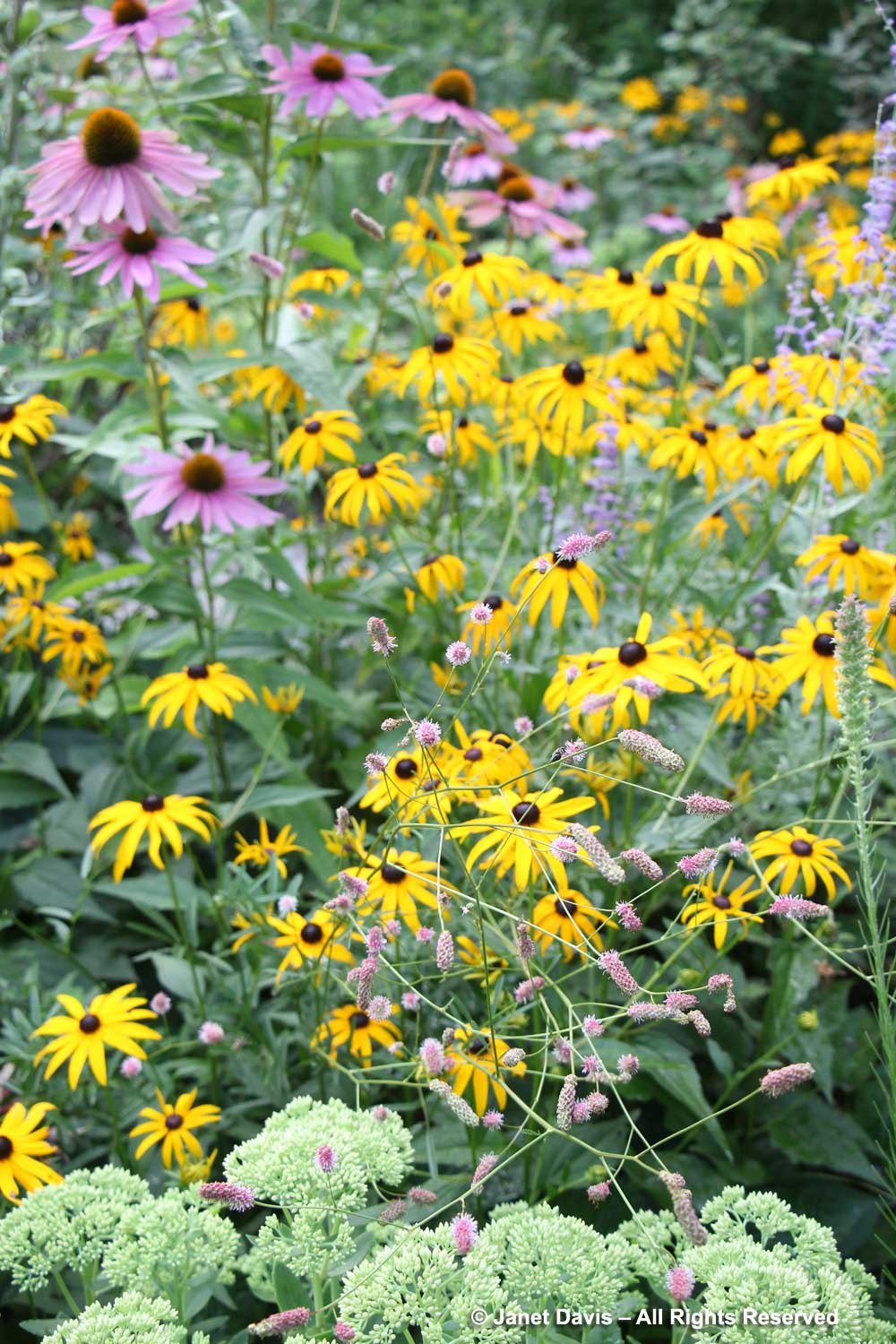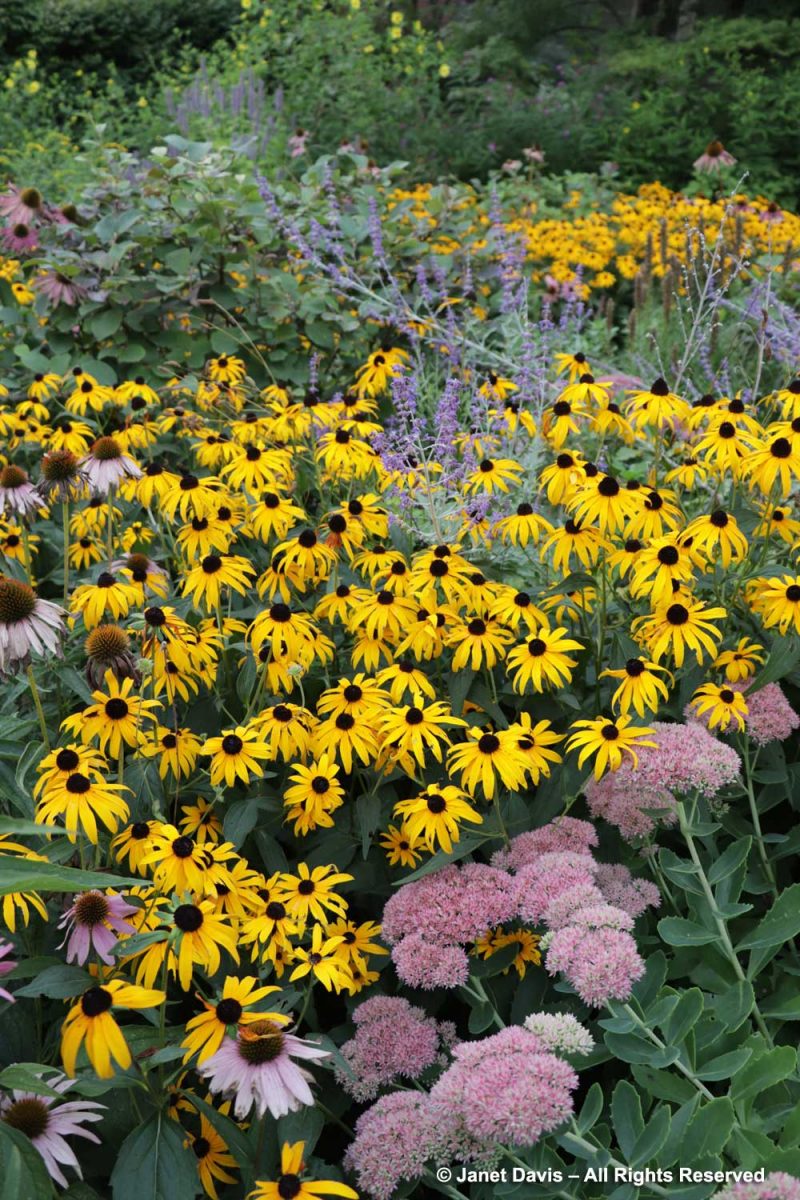This is truly my favourite time of year in the meadows at our cottage on Lake Muskoka. Why? Because the flower variety is at peak and the bees are at their most plentiful and buzzy. So my 17th fairy crown for August 5th celebrates the pollinator favourites here, including the champion, pink-flowered wild beebalm or bergamot (Monarda fistulosa), as well as yellow false oxeye (Heliopsis helianthoides), biennial blackeyed susan (Rudbeckia hirta), grey-headed coneflower (Ratibida pinnata) with its dark cones, mauve hoary vervain (Verbena stricta), oregano (Origanum vulgare) and a few of my weedy Queen Anne’s lace flowers (Dauca carota).
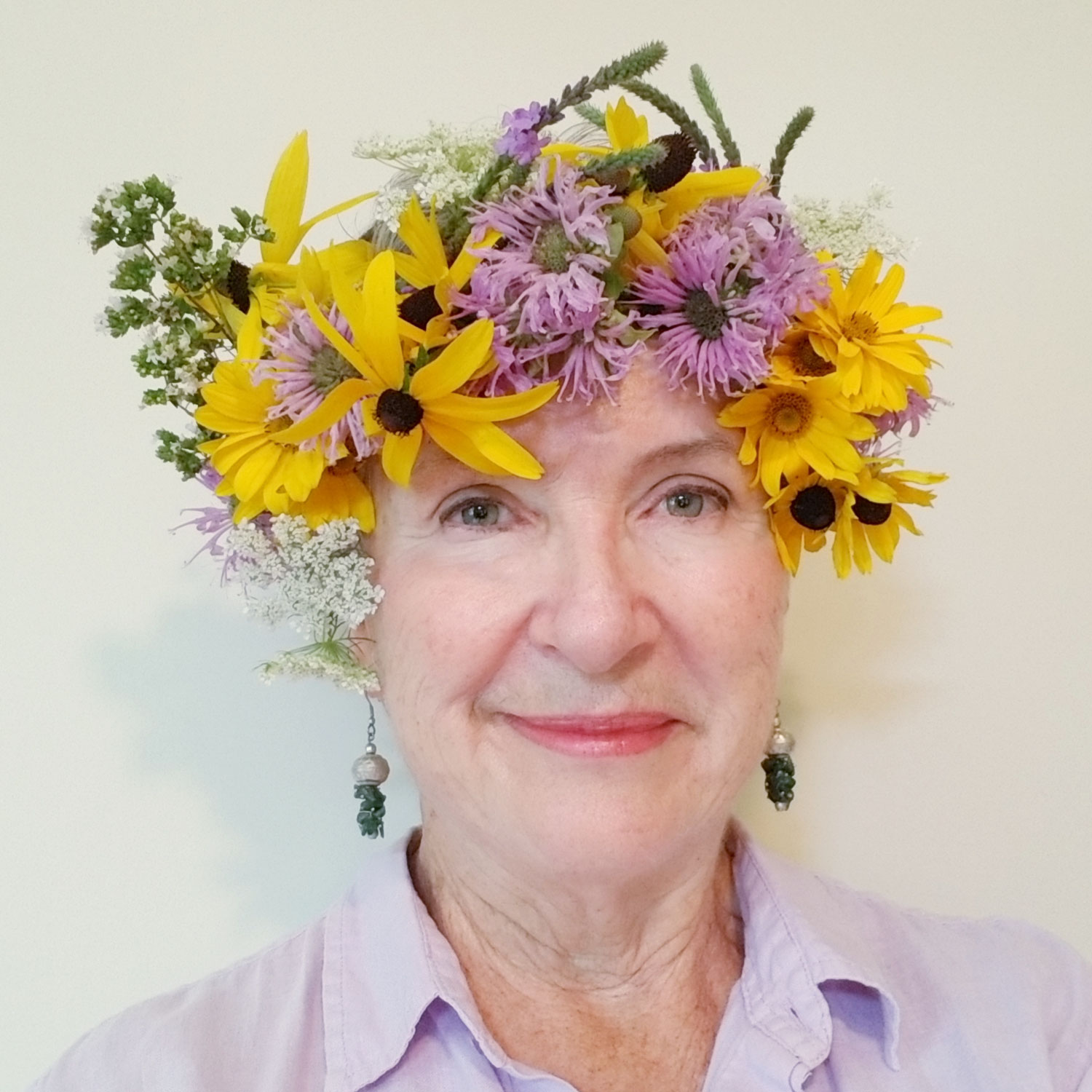
I call my wild places on either side of the cottage ‘Monarda Meadows’ because wild beebalm (M. fistulosa) is the principal perennial there and in all the beds and wild places around our house, where it grows as a companion to Heliopsis helianthoides, below.
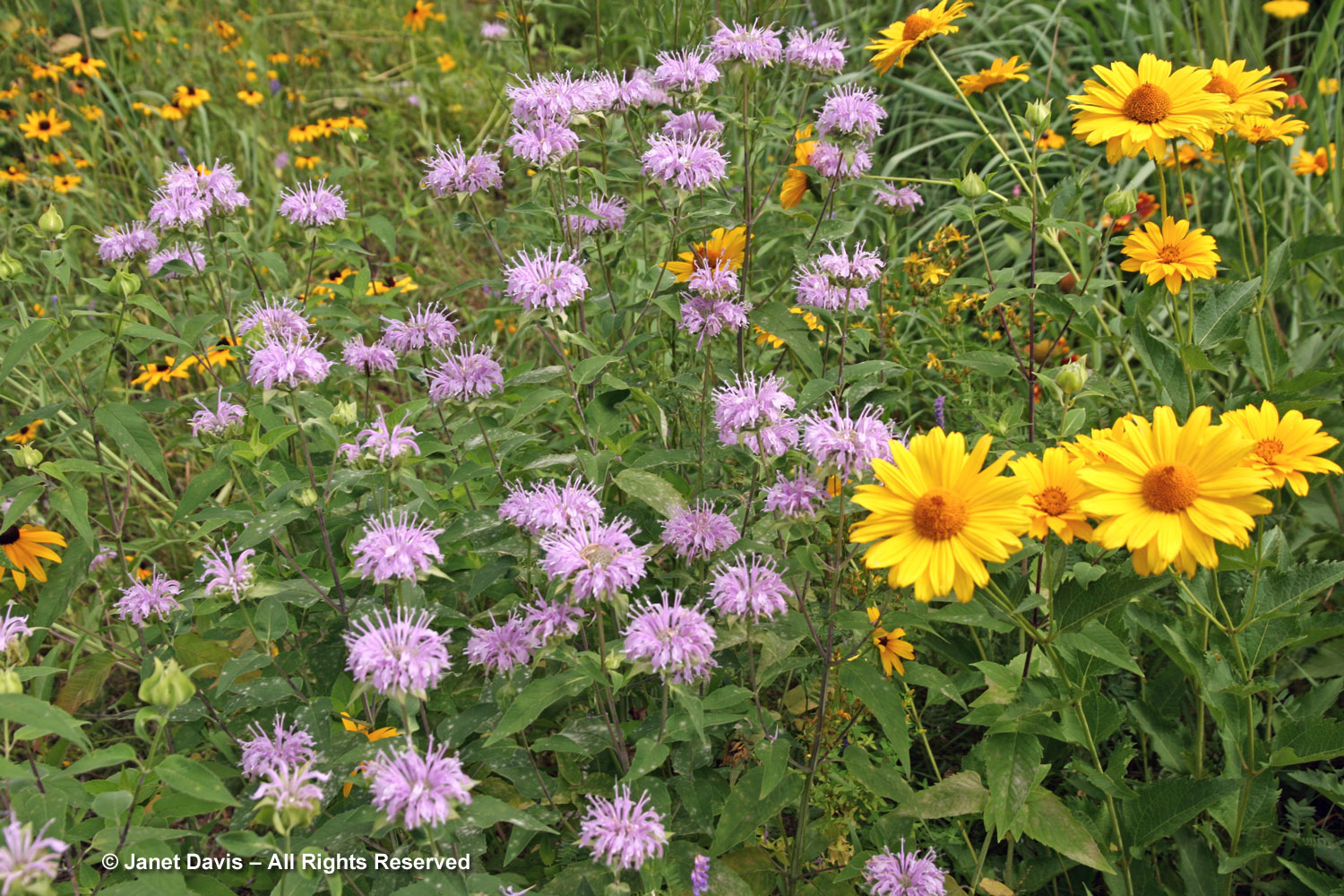
There’s a reason wild beebalm is called that; it’s a literal balm for the bees, specifically bumble bees whose tongues can easily probe the florets!
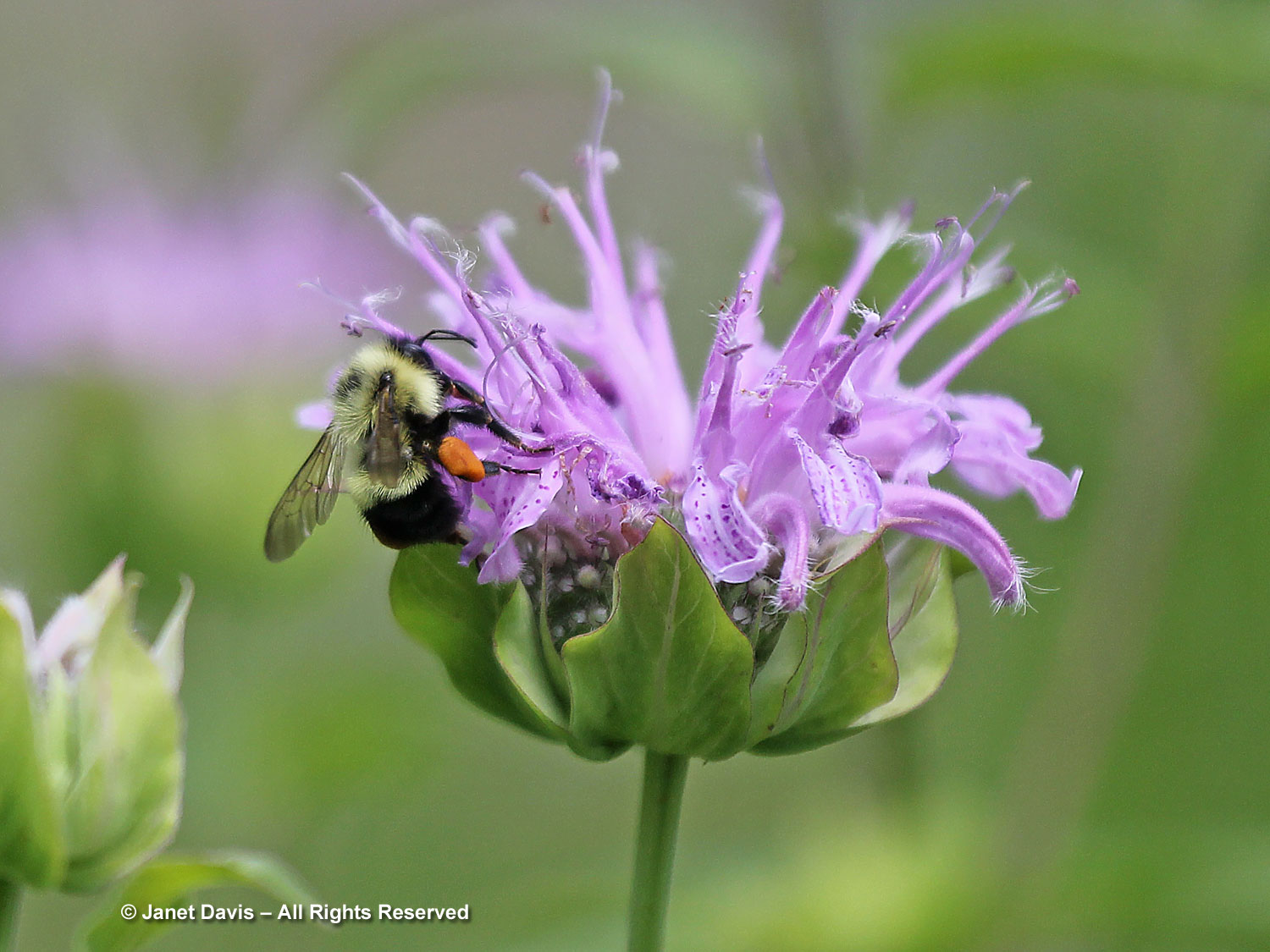
Another frequent visitor to wild beebalm flowers is the clearwing hummingbird moth (Hemaris thysbe).
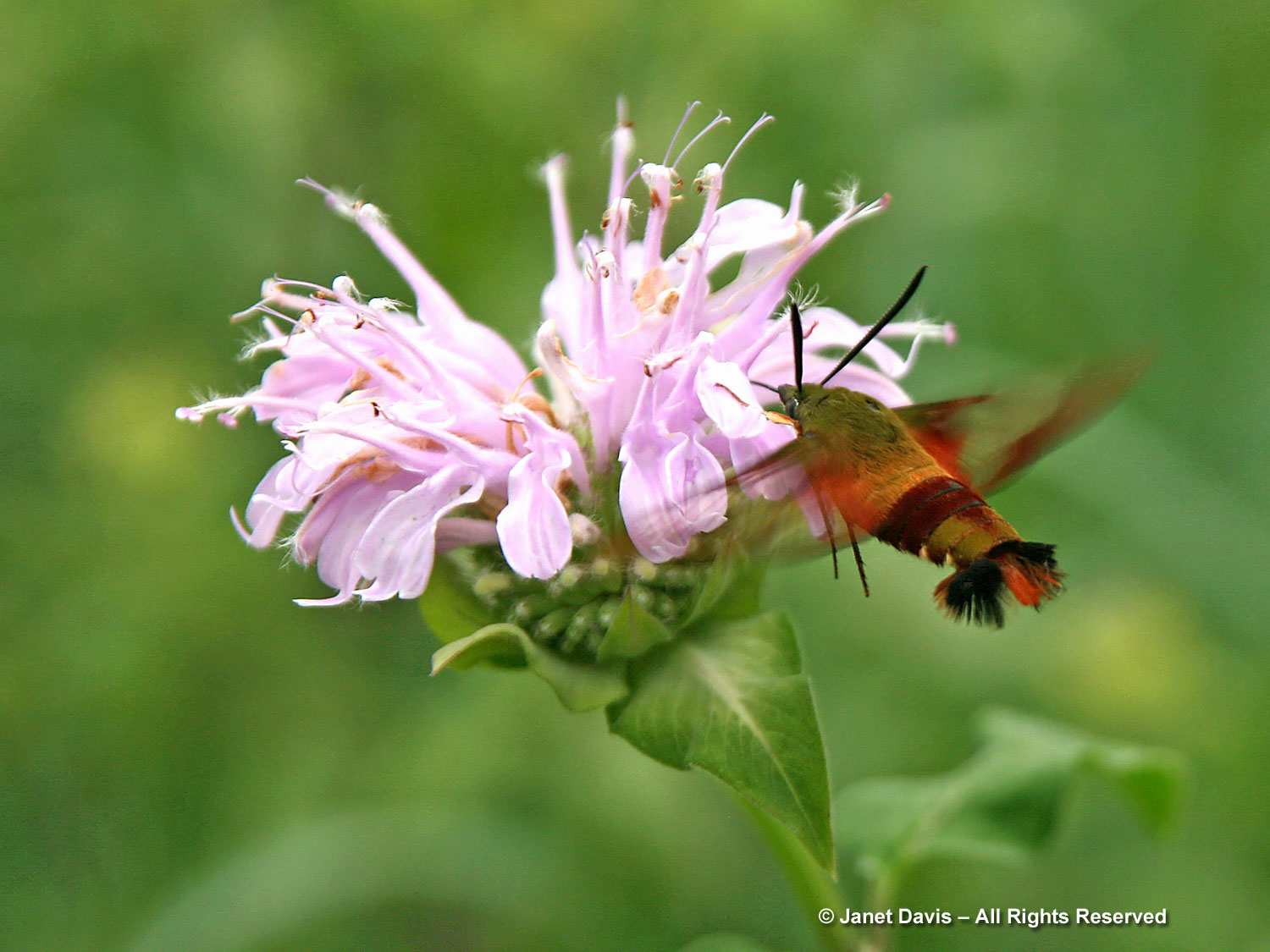
False oxeye (Heliopsis helianthoides) is one of the most aggressive natives I grow. I’m happy to leave it where it lands, but it often sulks in very sandy, sunny spots when summers are hot and dry. It’s much better in the rich soil at the bottom of my west meadow, and I try to ignore all the red aphids that line the stems in certain summers.
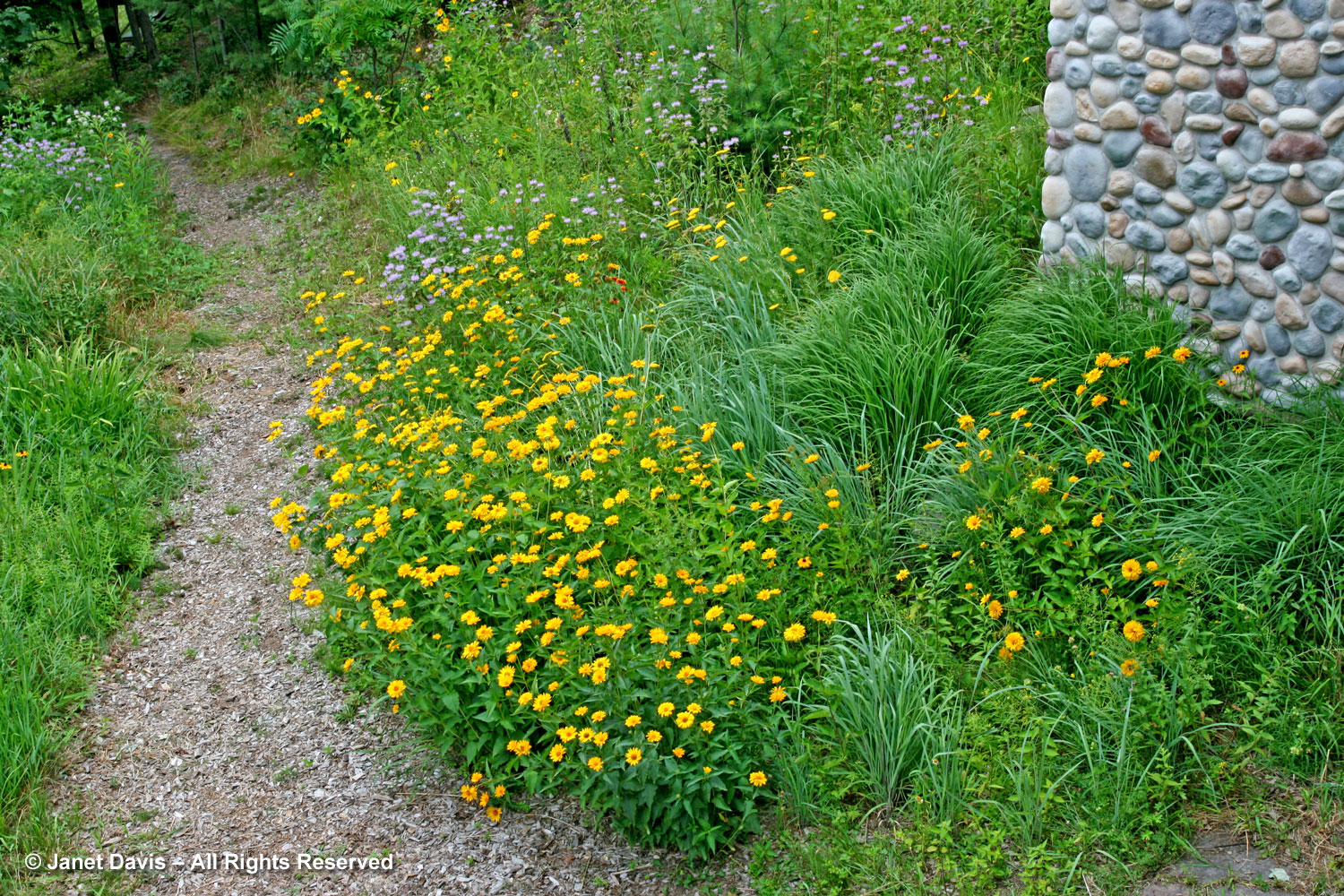
But heliopsis also attracts its share of native bees, including tiny Augochlora pura, below.
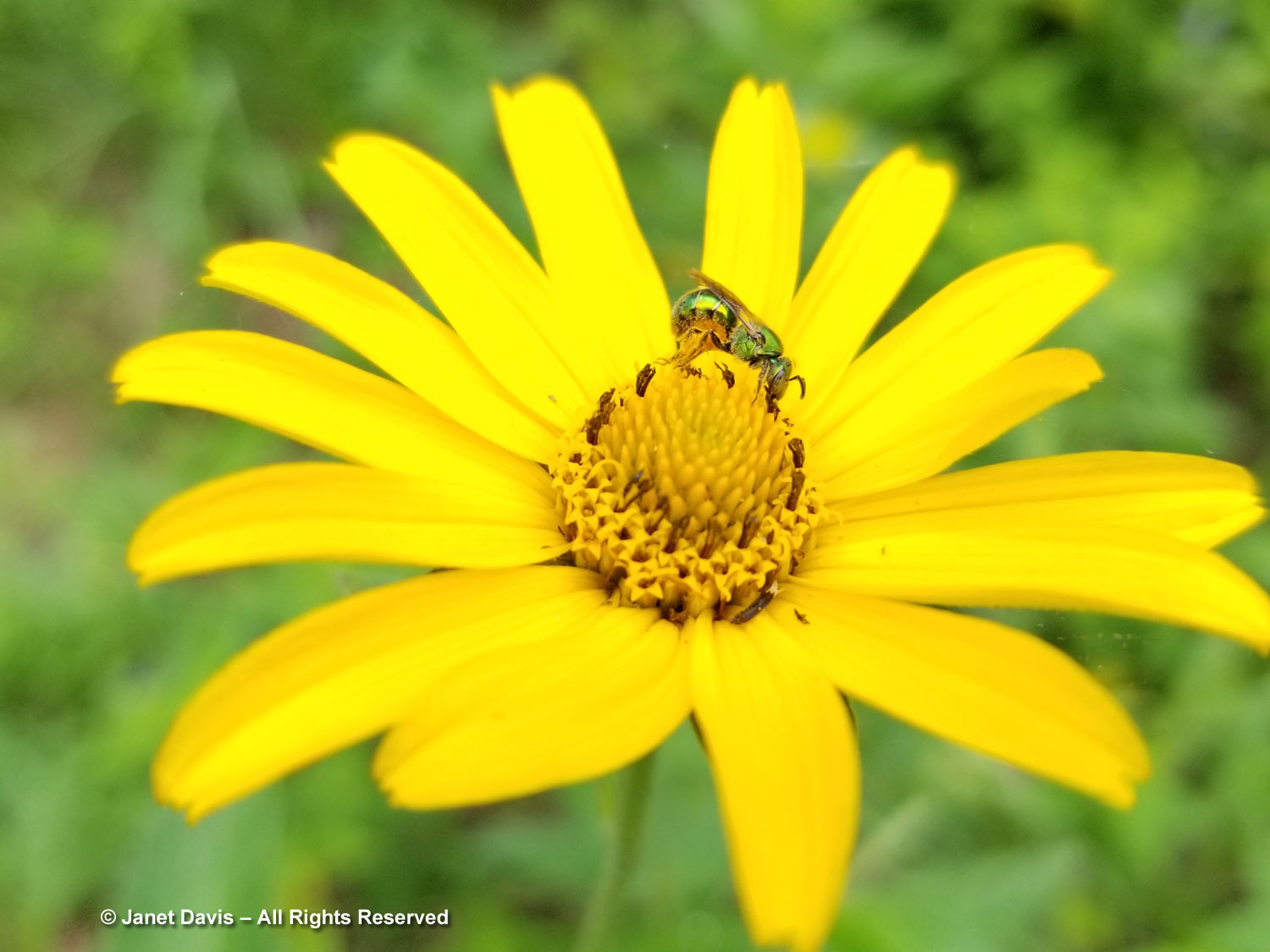
Unlike the blackeyed susan I wrote about in my last blog, R. fulgida var. sullivantii ‘Goldsturm’, the ones I have at the lake are all the drought-tolerant native Rudbeckia hirta, below, with a long-horned Melissodes bee. Biennials, they have seeded themselves around generously since 2003, when I first sowed masses of seed (along with red fescue grass) on the bare soil of the meadows surrounding our new house.
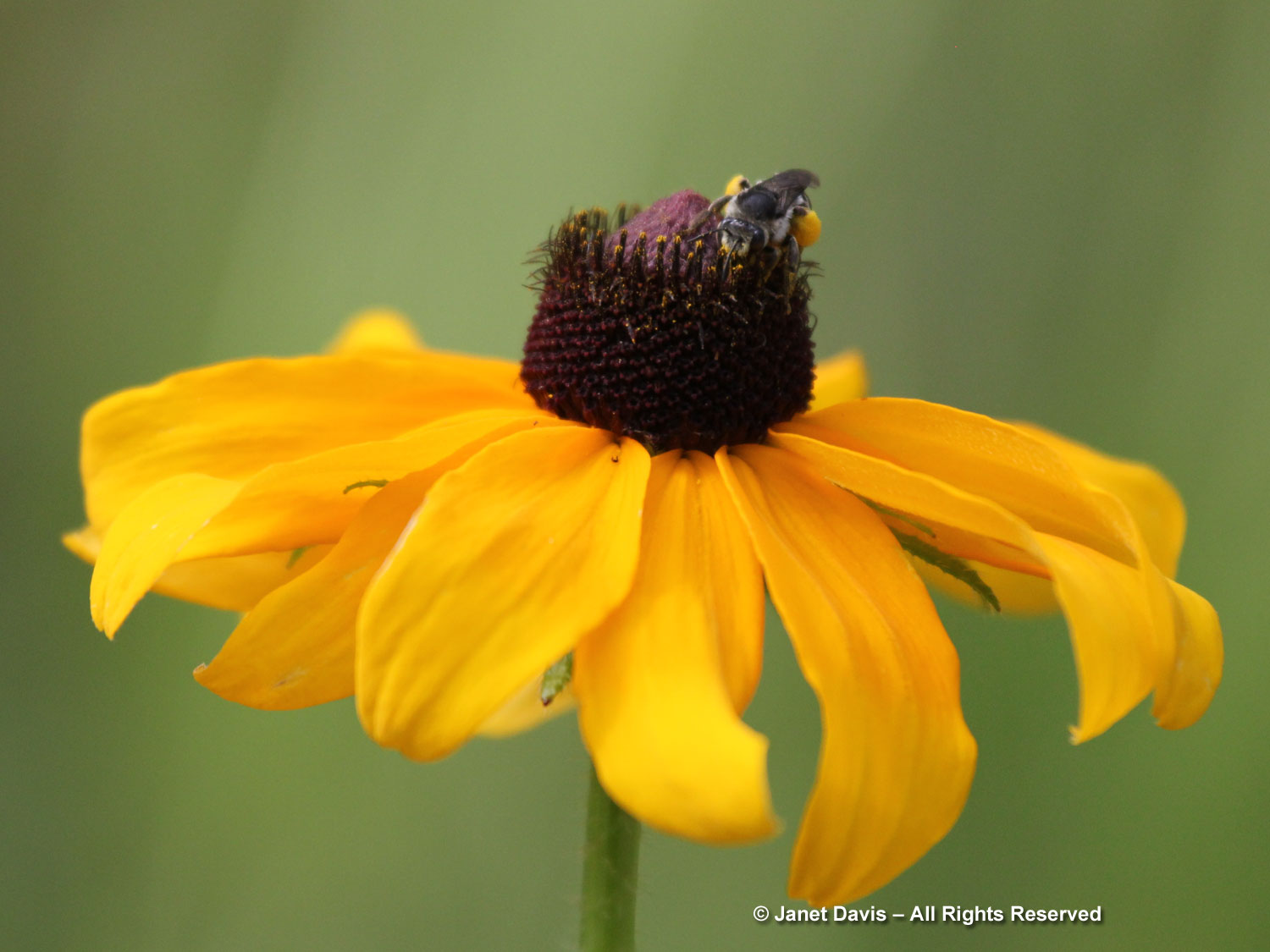
Sometimes they manage to arrange themselves very fetchingly, as with the perfumed Orienpet lily ‘Conca d’Or’, below.
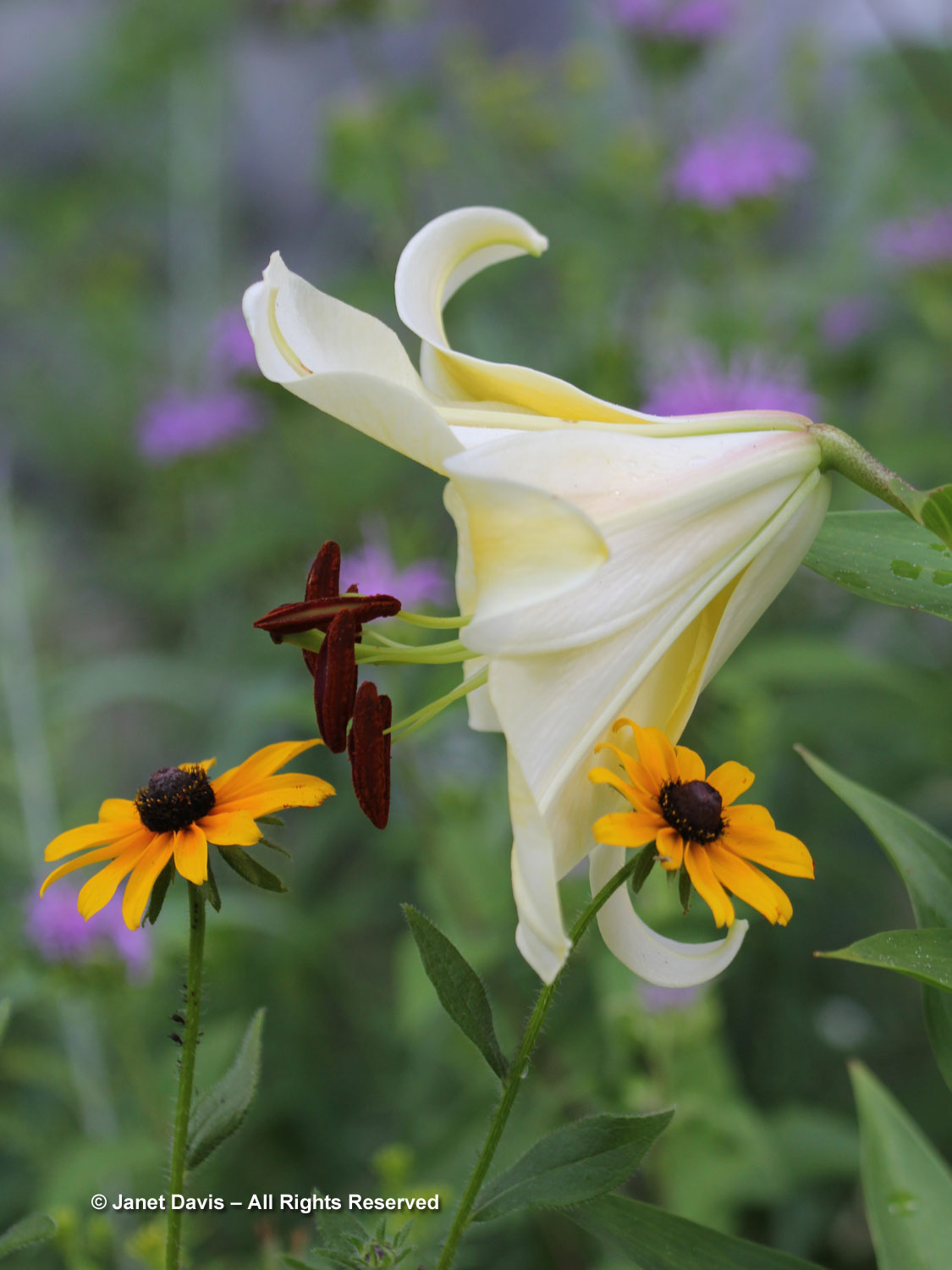
Other times, they hang with the other tough native in my crown, hoary vervain (Verbena stricta). Both are happy in the driest places on our property where they flower for an exceedingly long time….
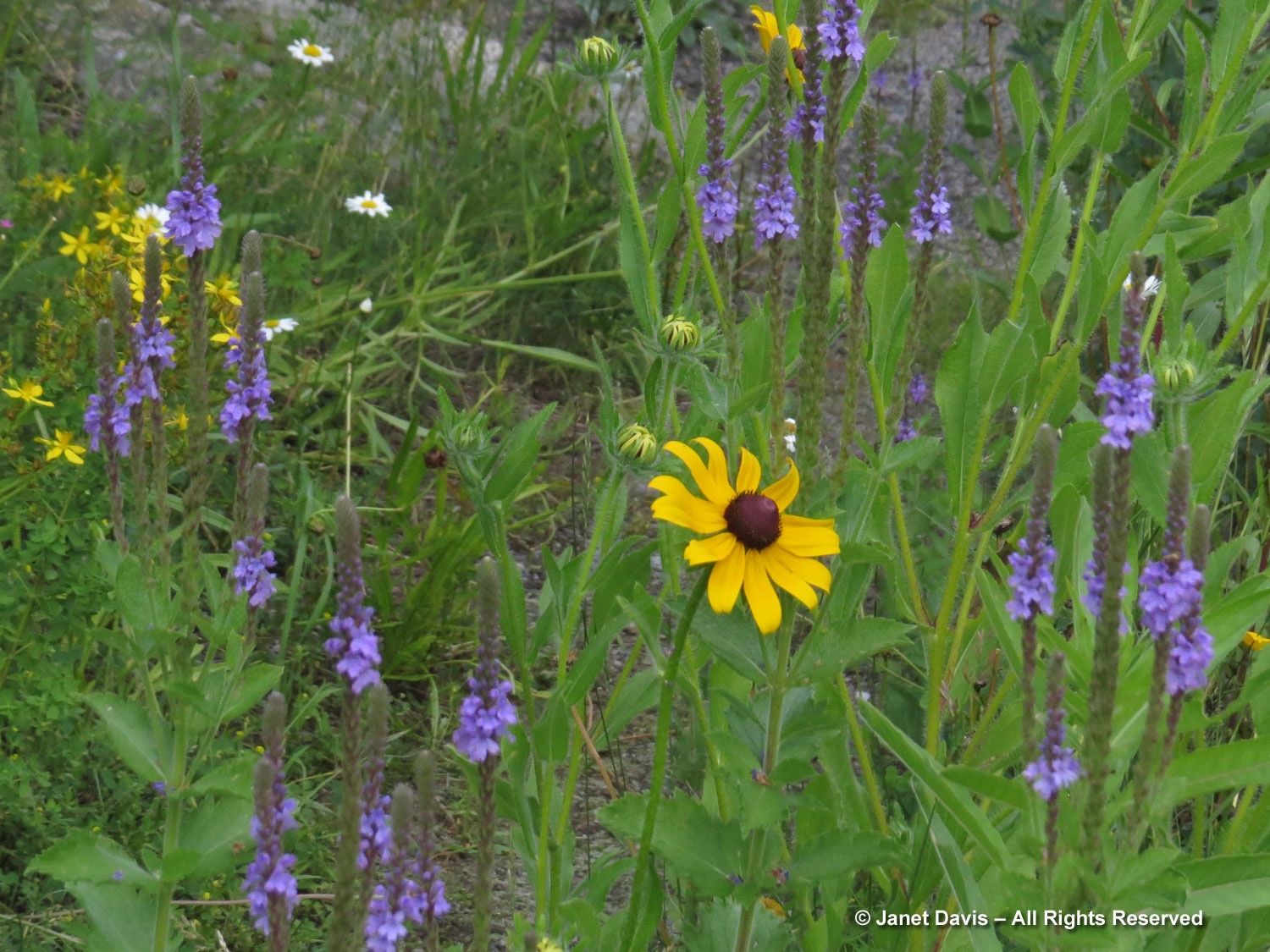
…… as you can see from this impromptu bouquet handful featuring the vervain with earlier bloomers, coreopsis, butterfly milkweed and oxeye daisy.
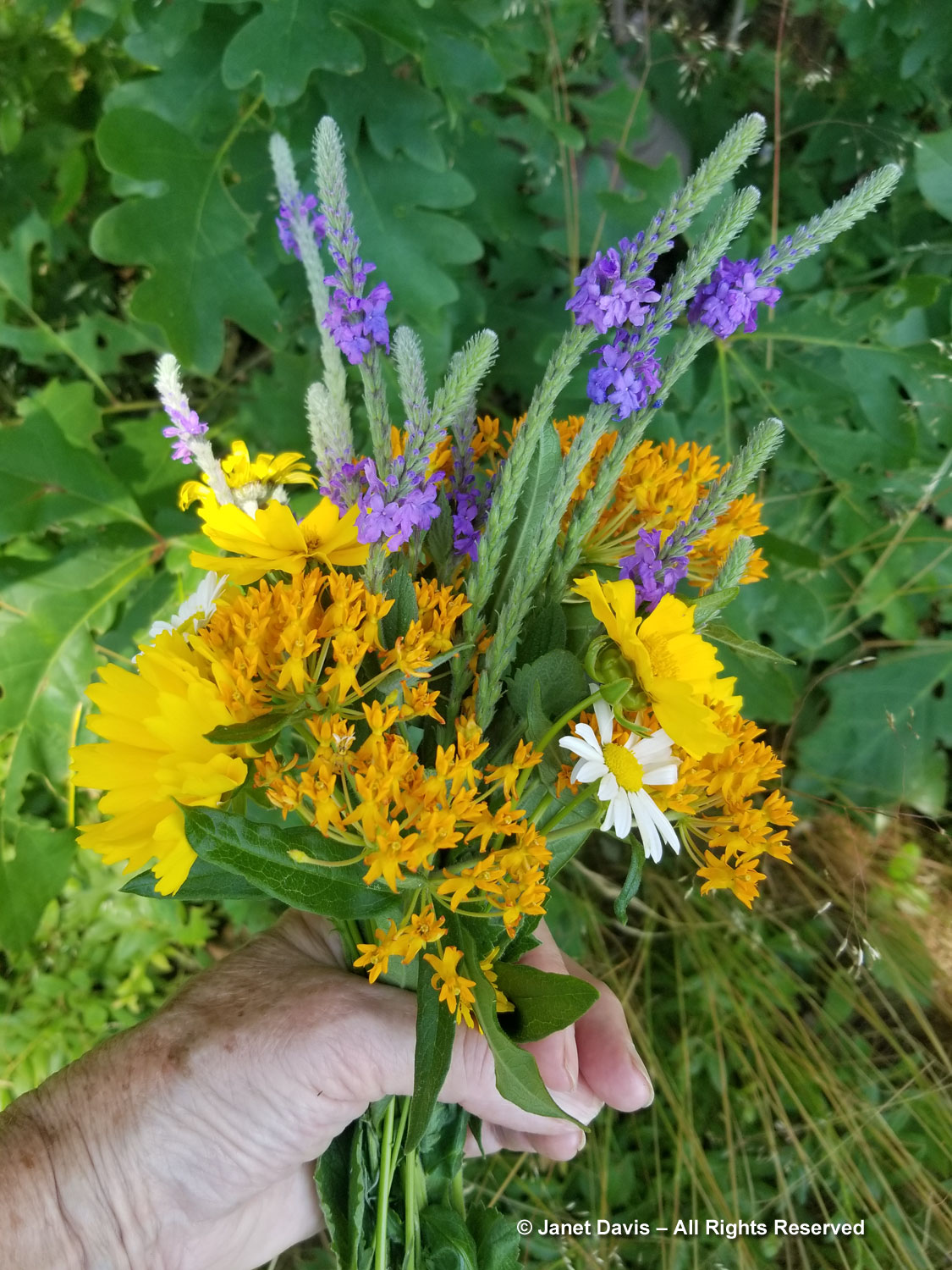
Bumble bees love Verbena stricta.
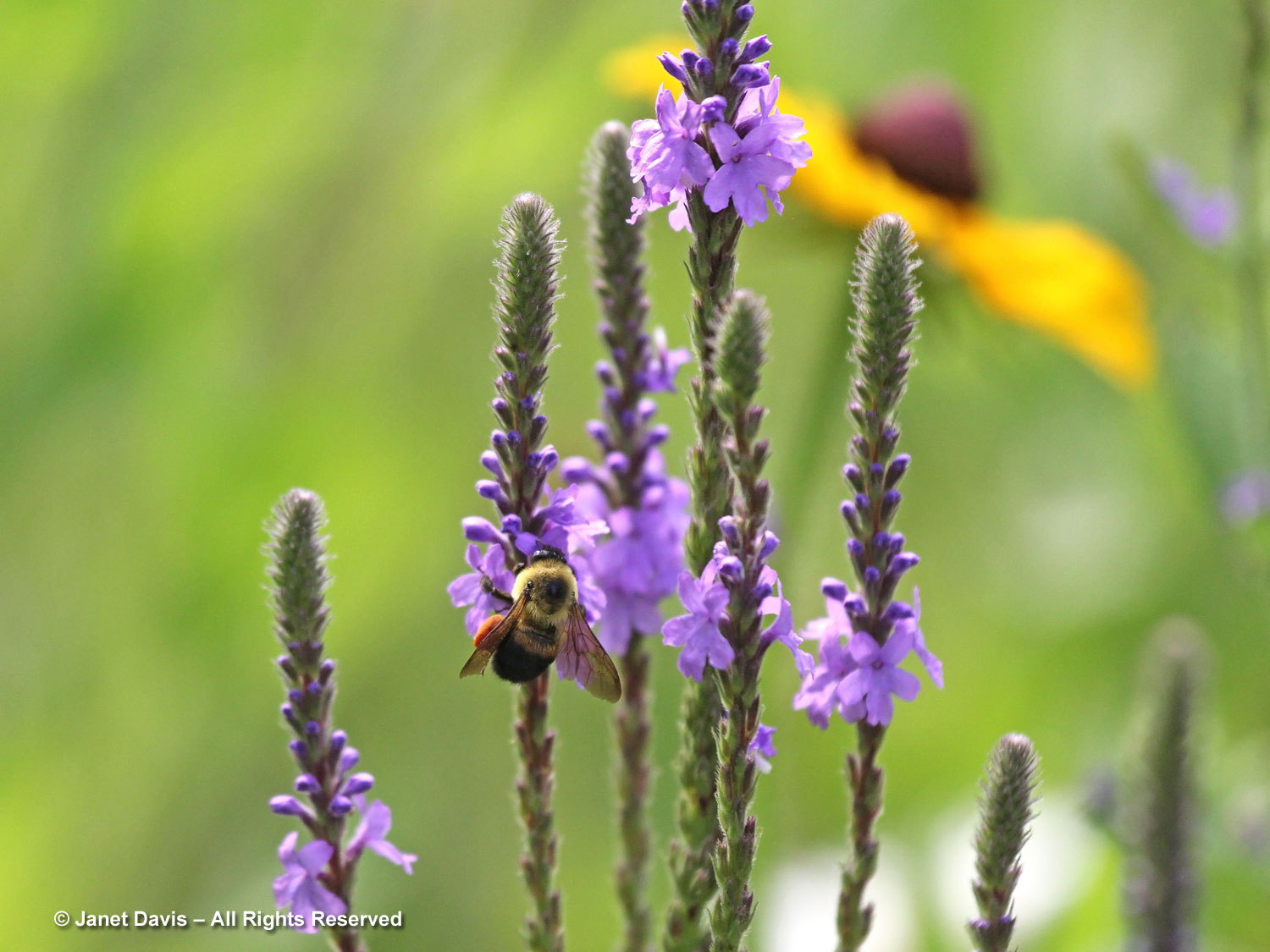
The other yellow daisy in flower now — hiding at the top of my fairy crown — is grey-headed coneflower (Ratibida pinnata), also a favourite of bumble bees and small native bees in the meadows. A vigorous self-seeder, it nevertheless does not always land in soil that is moisture-retentive enough for its needs; in that case, like heliopsis above, it wilts badly. But I love its tall stems bending like willows in the breeze.
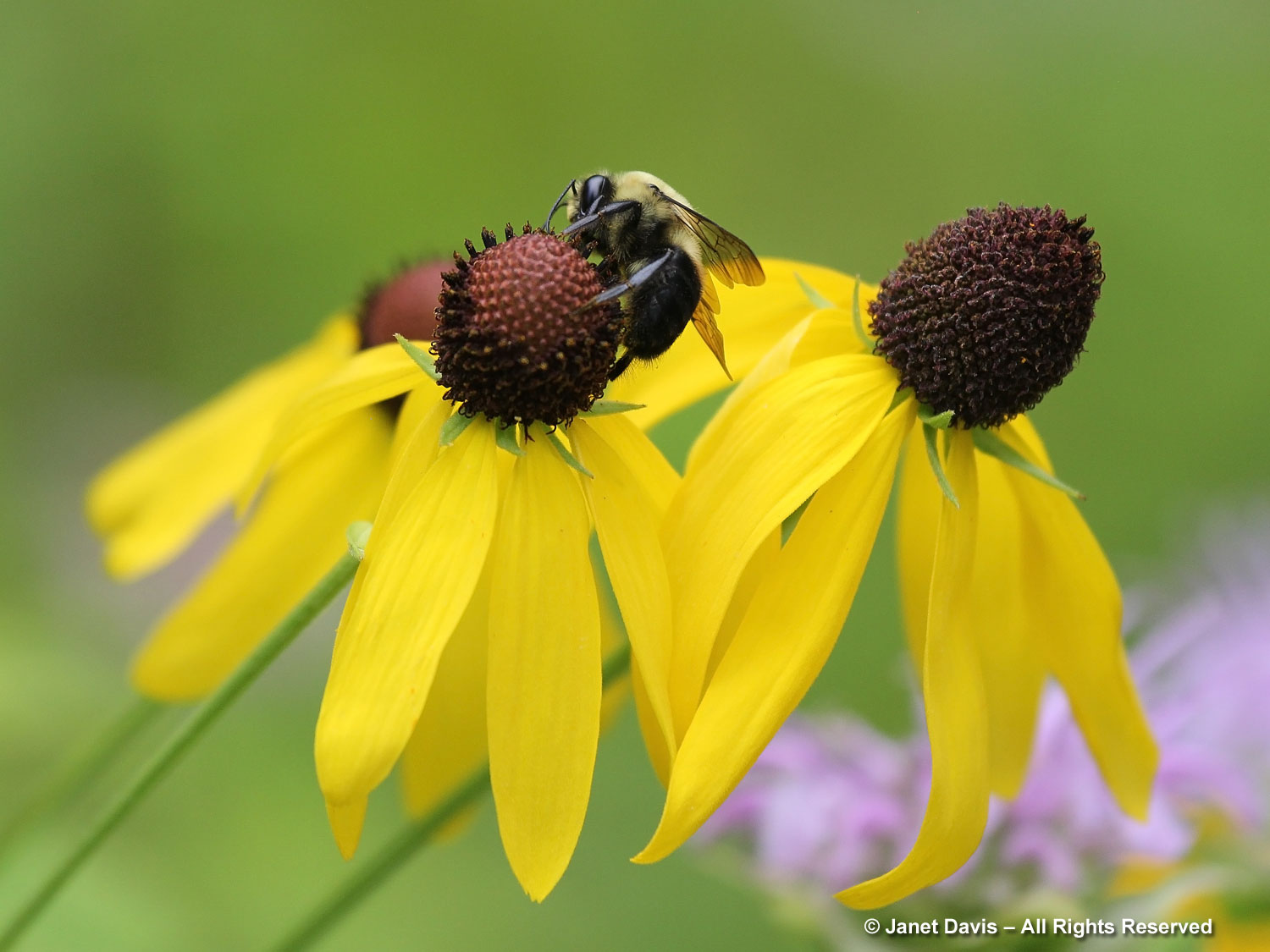
Also in my fairy crown is a familiar hardy herb that fell from a pot on my deck long ago and found a happy spot in the garden bed below: Greek oregano (Origanum vulgare var. hirtum).
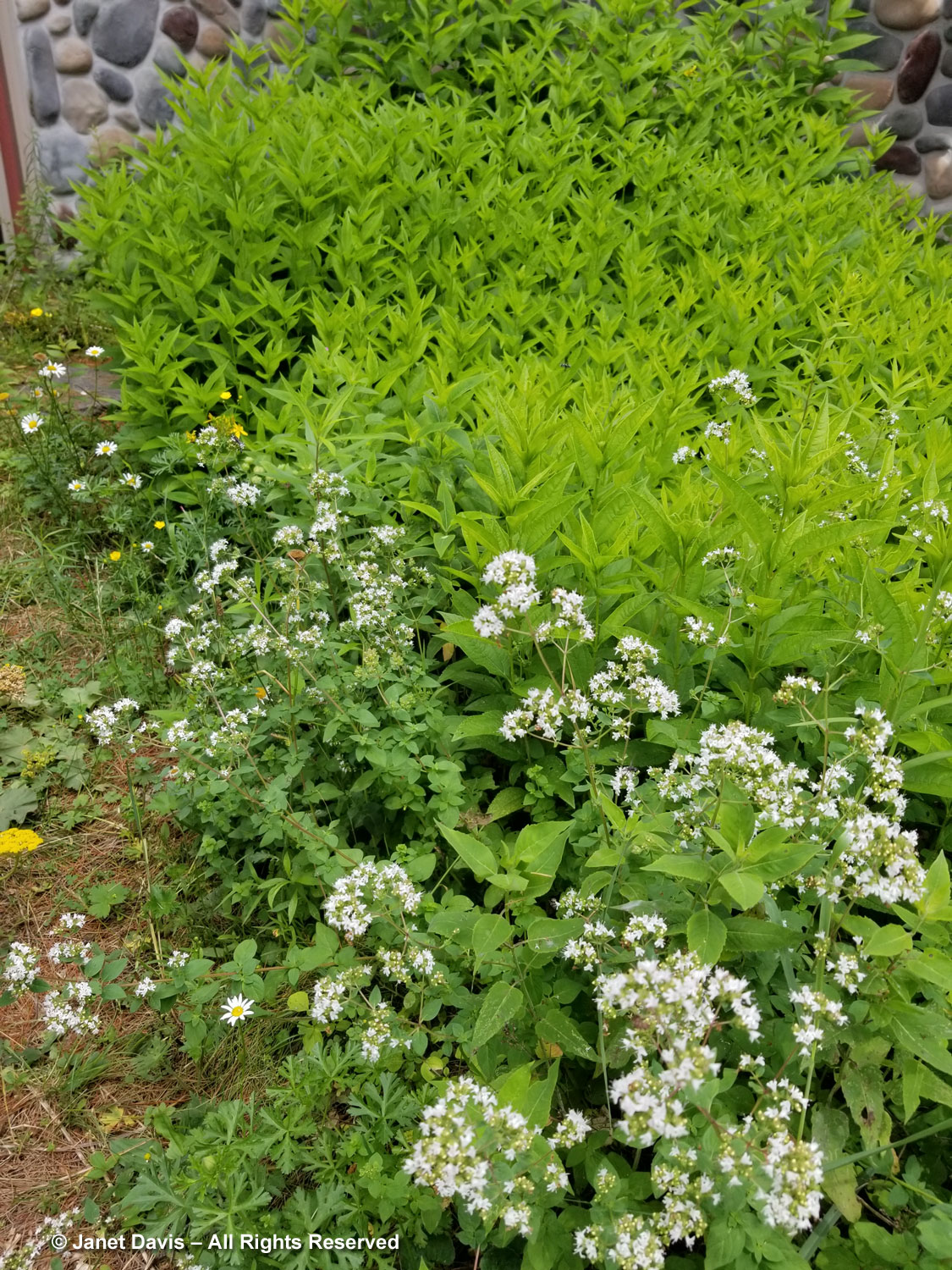
Its tiny flowers are also favoured by small pollinators.
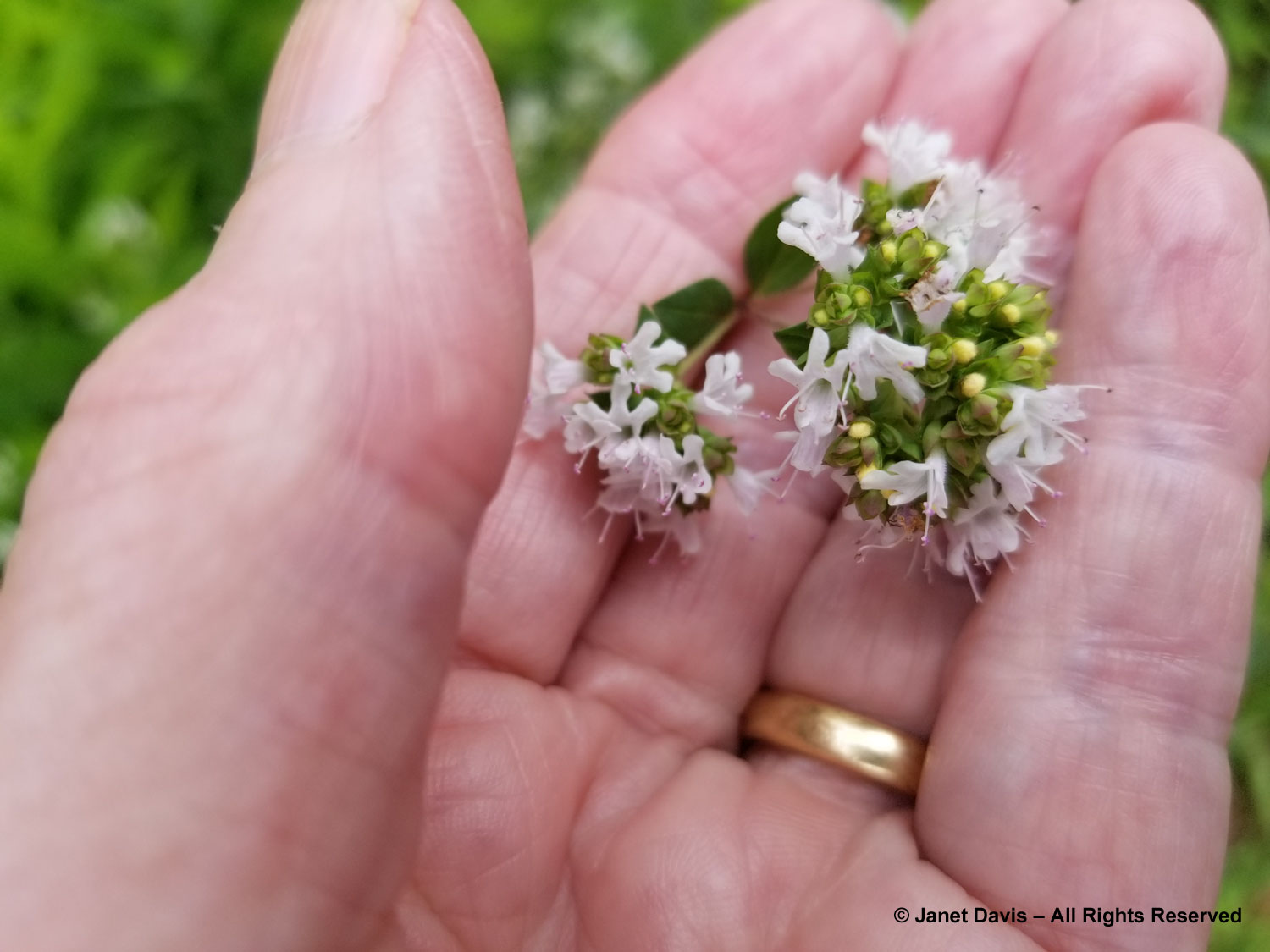
The last component of my midsummer fairy crown is the common umbellifer Queen Anne’s lace (Daucus carota). As much as we think of this as an unwanted invasive weed in North America, it was reassuring to see a native potter wasp, Ancistrocerus, making use of its small flowers.
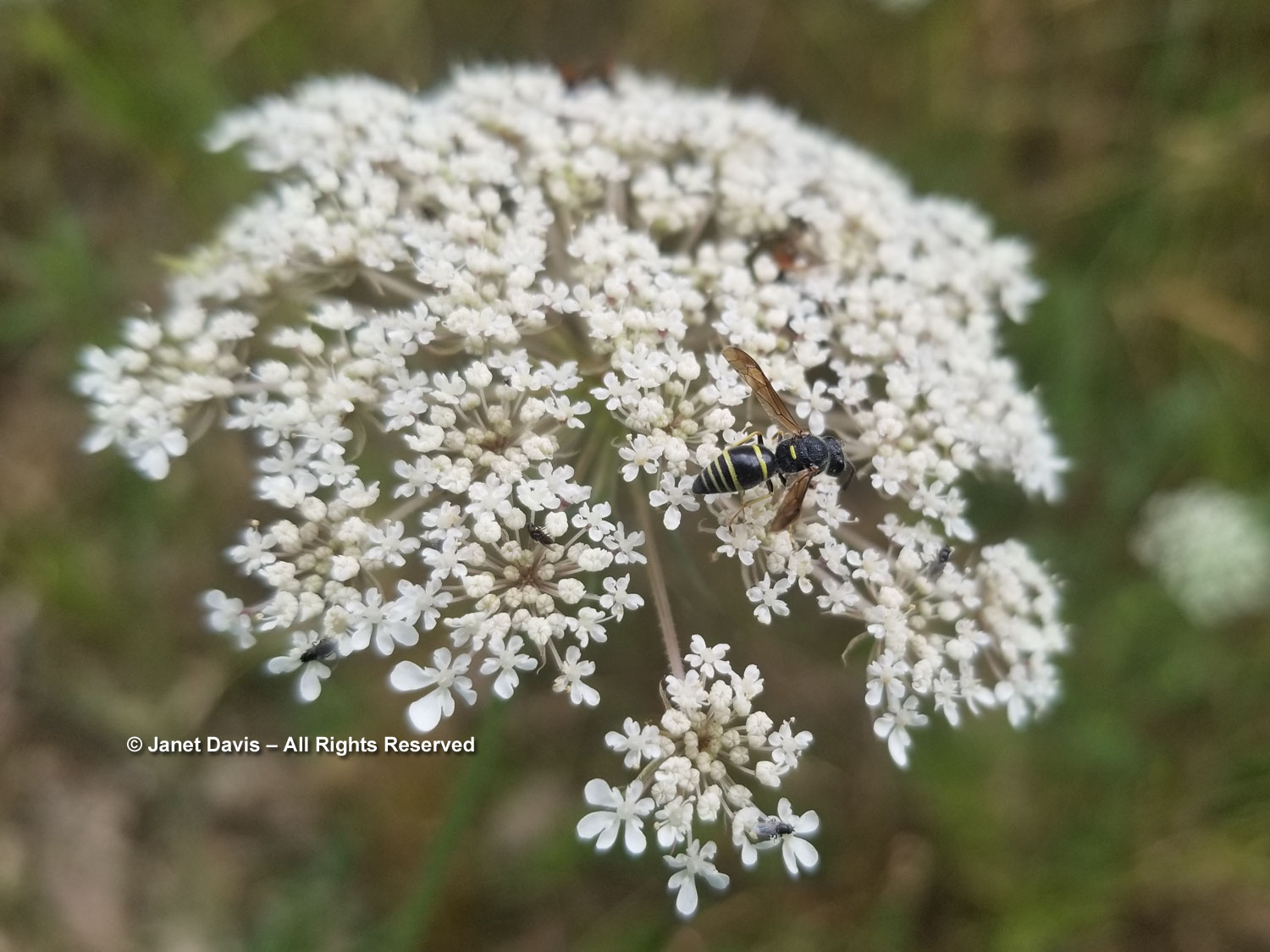
As always, my fairy crown has a lovely second act as a bouquet.
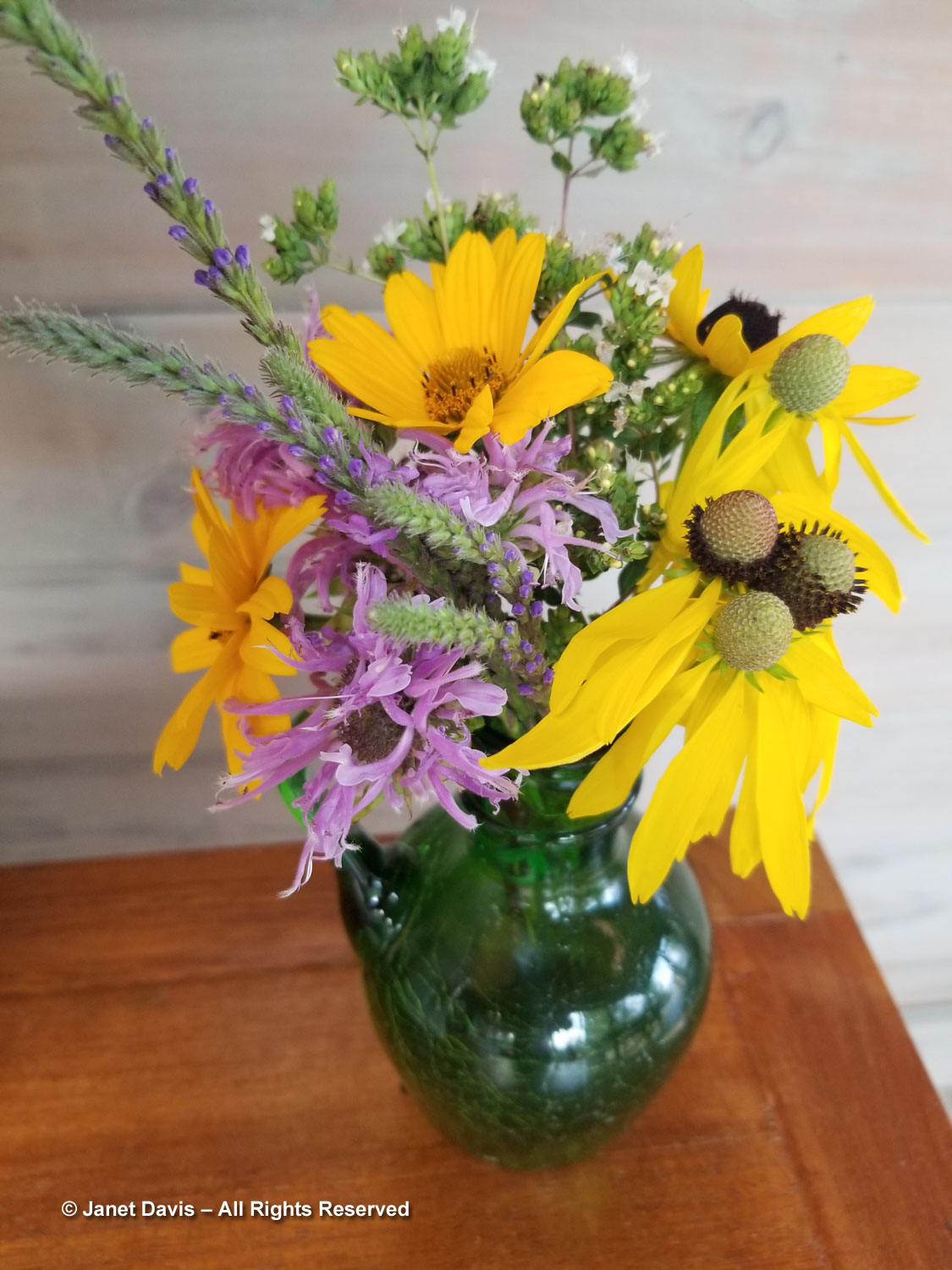
Finally, I made a 2-minute musical video that celebrates these plants that form such an important ecological chapter in my summer on Lake Muskoka.
*************
Are you new to my fairy crowns? Here are the links to my previous 15 blogs:
#1 – Spring Awakening
#2 – Little Blossoms for Easter
#3 – The Perfume of Hyacinths
#4 – Spring Bulb Extravaganza
#5 – A Crabapple Requiem
#6 – Shady Lady
#7 – Columbines & Wild Strawberries on Lake Muskoka
#8 – Lilac, Dogwood & Alliums
#9 – Borrowed Scenery & an Azalea for Mom
#10 – June Blues on Lake Muskoka
#11 – Sage & Catmint for the Bees
#12 – Penstemons & Coreopsis in Muskoka
#13 – Ditch Lilies & Serviceberries
#14 – Golden Yarrow & Orange Milkweed
#15 – Echinacea & Clematis
#16 – A Czech-German-All American Blackeyed Susan


